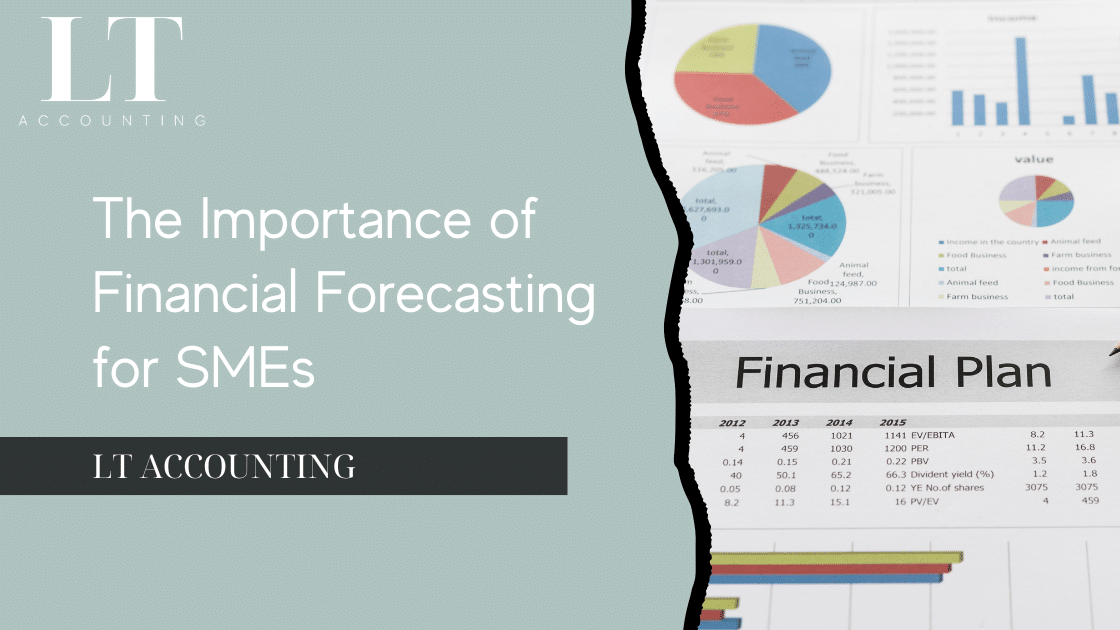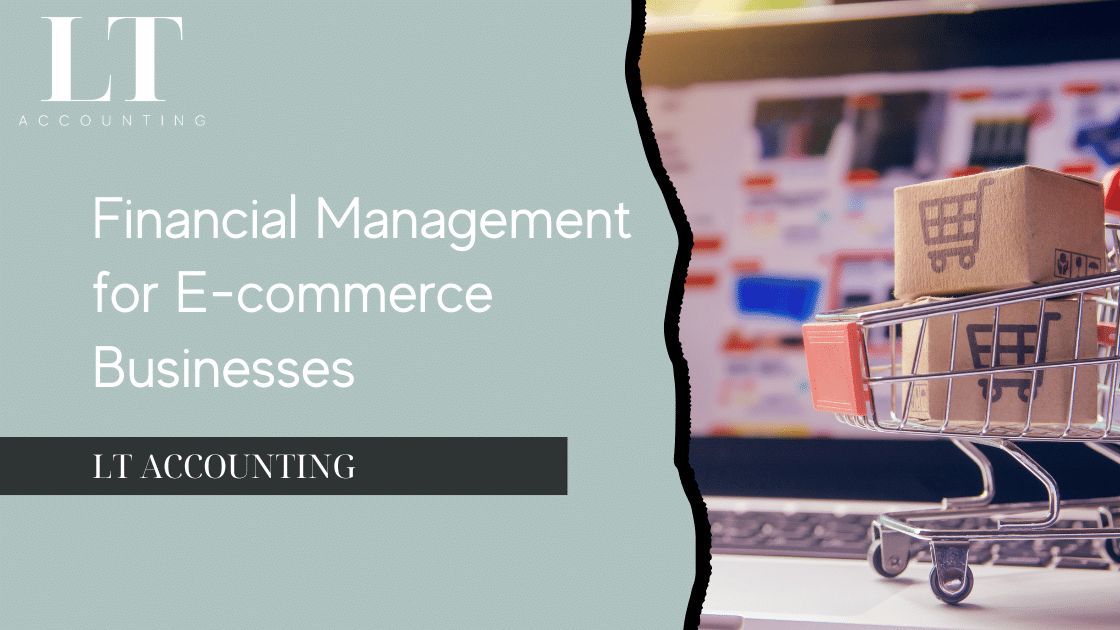In an ever-evolving economic landscape, the ability to anticipate and strategically plan for the future is not just an asset; it’s a necessity for survival and growth. For small and medium-sized enterprises (SMEs) in the UK, Financial forecasting for SMEs emerges as a cornerstone of this anticipatory planning, offering a glimpse into the financial future of a business. By projecting cash flow, revenue, and expenses, companies can make informed decisions, strategise effectively, and mitigate risks associated with the unpredictability of business operations.
Yet, despite its significance, many SMEs navigate without the compass of financial forecasting, often due to misconceptions about its complexity or the resources it requires. This oversight can lead to missed opportunities, financial mismanagement, and in severe cases, business failure. The importance of financial forecasting for SMEs cannot be overstated; it is a critical tool that supports strategic planning, financial health assessment, and the overall decision-making process.
This article aims to demystify financial forecasting for SMEs in the UK, outlining its necessity, the methodologies involved, tools available, and best practices for integrating it into the business strategy. By embracing Financial forecasting for SMEs can unlock new growth avenues, optimise operations, and build a robust foundation for long-term success.
The Role of Financial Forecasting in SMEs’ Success
Financial forecasting is not just about predicting the future; it’s about creating a roadmap that guides SMEs through the financial aspects of their business journey. This roadmap is instrumental in strategic planning, providing insights that influence key business decisions—from expansion plans and new product launches to budget allocations and resource management.
Strategic Planning and Decision-Making
At its core, financial forecasting enables SMEs to make proactive rather than reactive decisions. By understanding potential future financial scenarios, businesses can strategise to capitalise on opportunities and avoid pitfalls. This forward-looking approach is crucial in maintaining competitiveness and adapting to market changes.
Securing Funding and Attracting Investors
For SMEs looking to secure loans or attract investment, a well-crafted financial forecast is invaluable. It demonstrates to lenders and investors that the business has a clear vision for its future and a plan to achieve its financial goals. A realistic and data-driven forecast can build credibility and confidence among potential financial partners, opening doors to capital that can fuel growth and expansion.
Key Components of Financial Forecasting
Cash Flow Projection
A critical aspect of Financial forecasting for SMEs is cash flow projection. It involves estimating the amount of money expected to flow in and out of the business over a certain period. Accurate cash flow projections help SMEs ensure they have sufficient liquidity to meet their obligations, avoiding the pitfalls of cash shortages that can cripple business operations.
Revenue Forecasting
Another essential component is revenue forecasting, which estimates future sales. This projection helps businesses set realistic sales targets, plan for growth, and adjust marketing strategies to meet financial objectives. Various methods, from historical data analysis to market trend evaluation, can be employed depending on the business model and industry.
Expense Forecasting
Finally, forecasting expenses is crucial for managing the cost side of the business. Identifying fixed and variable costs, along with planning for unexpected expenses, allows SMEs to maintain financial stability. It ensures that businesses are not caught off-guard by unforeseen financial outlays, which can disrupt the budget and impede growth.
Conclusion
Financial forecasting is a pivotal process that equips SMEs in the UK with the insights needed to navigate the complexities of the business world. It’s a strategic tool that supports decision-making, risk management, and future planning. As we explore the methodologies, tools, and best practices in the following sections, it becomes clear that financial forecasting is not just a luxury for large corporations but a critical asset for SMEs striving for success in a competitive landscape.
Tools and Resources for Effective Financial Forecasting
Navigating the financial future of an SME requires more than just intuition and experience; it demands the right set of tools and resources. In today’s digital age, an array of software and professional services are available to aid SMEs in crafting accurate and comprehensive financial forecasts. These tools not only streamline the forecasting process but also enhance its accuracy, allowing business owners to make more informed decisions.
Financial Forecasting Software
A variety of financial forecasting software options exist, designed to cater to the diverse needs of SMEs across sectors. These tools often offer features such as automated data analysis, scenario planning, and real-time financial insights. While specific brand recommendations are beyond the scope of this article, key functionalities to look for include:
- Integration with accounting software: This allows for real-time data syncing, providing an up-to-date financial picture that enhances forecast accuracy.
- Customisable templates: Different businesses have unique forecasting needs. Software that offers customisable templates allows for more tailored forecasts.
- Scenario analysis: The ability to compare different financial scenarios side-by-side helps in understanding the potential impact of various business decisions.
When selecting a financial forecasting tool, it’s crucial for SMEs to consider factors like ease of use, cost, scalability, and the level of support provided by the software company. A tool that matches the business’s specific needs can become an invaluable asset in financial planning and decision-making.
Professional Accountancy Services
While software tools offer significant advantages, the role of professional accountancy services in enhancing forecasting accuracy cannot be overlooked. Accountants and financial advisors bring a wealth of experience and expertise to the table, offering insights that software alone cannot provide. They can help SMEs:
- Identify industry trends and benchmarks: Professionals can provide context around the numbers, offering insights into industry standards and how the SME stacks up.
- Navigate complex financial regulations: This is particularly important in the UK, where tax regulations and financial reporting requirements can be intricate.
- Offer bespoke advice: Tailored advice on cost-saving measures, investment opportunities, and financial risk management can significantly impact the business’s bottom line.
The combination of advanced forecasting tools and expert professional advice creates a powerful duo for SMEs. This blend not only simplifies the financial forecasting process but also elevates its accuracy and strategic value.
Best Practices for Financial Forecasting for SMEs
Adopting the right tools and resources is just the beginning. Implementing best practices in financial forecasting ensures that SMEs can leverage their forecasts for maximum strategic advantage. Here are some key best practices:
Regular Review and Adjustment of Forecasts
The business environment is dynamic, with frequent changes in market conditions, consumer preferences, and regulatory landscapes. As such, financial forecasts should not be static documents. Regularly reviewing and adjusting forecasts ensures they remain relevant and reflective of the current business situation.
Maintain Realistic Assumptions
Optimism is a common trait among entrepreneurs, but when it comes to Financial forecasting for SMEs, realism is key. Forecasts should be based on realistic assumptions, backed by data and rational projections. Overly optimistic forecasts can lead to poor decision-making and financial strain.
Promote Financial Awareness Within the Organisation
Creating a culture of financial awareness and planning within the SME can have far-reaching benefits. When team members understand the financial goals and the role their work plays in achieving them, it can lead to more cost-effective operations and a stronger alignment towards the business’s financial objectives.
Conclusion
The journey of financial forecasting is a critical one for SMEs, filled with challenges but also opportunities for growth and stability. With the right tools, resources, and best practices, SMEs can transform their financial forecasting process into a strategic asset. Whether it’s through leveraging advanced software solutions, consulting with financial professionals, or embedding a culture of financial planning, the goal remains the same: to equip SMEs with the insights needed to navigate the future confidently. In doing so, financial forecasting becomes not just a task to be completed, but a cornerstone of strategic business management, driving SMEs towards sustained success in the competitive UK market.




